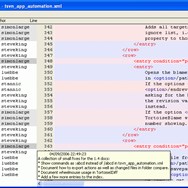

These native mobile apps offer fast performance, smooth animations, natural interaction patterns (like swipe gestures), and improved access to all native device capabilities. Mendix native mobile apps are offline-first, which means they work regardless of their internet connection. The new Native mobile navigation profile type has been added next to Hybrid mobile, which is still supported and available. The native theme and styling is part of the Mendix Atlas UI framework. This means your app will look great out of the box, while you will still fully control your app’s styling. Note that native styling is based on JavaScript instead of Sass/CSS. For more information on styling, see the Native Mobile Styling Reference Guide. To start creating a native mobile application, we recommend creating a new project based on the Blank Native Mobile App. This app template contains everything you need to quickly get started: a preconfigured native navigation profile, a large variety of mobile-specific widgets, and nanoflow activities that let you leverage your device’s capabilities. The Mendix Make It Native app is the companion app for Mendix native developers who want to streamline their development process. The Make It Native app allows you to preview your apps while still in development. This speeds up communication, debugging, and allows ideas to become reality more quickly. For advanced information on debugging with the Make It Native app, see Debug Native Mobile Apps (Advanced) For an introduction to the Make It Native app, see Get Started with Native Mobile. The Mendix Make It Native app is available from Google Play and Apple Marketplace. We will continue to improve and extend their functionality. The Native Builder is a command line input tool which helps you build your Mendix native mobile app. After the Native Builder simplifies your build process, you can do what you want most: test and publish your app. The Native Builder uses MxBuild, GitHub, and App Center to simplify the app building process. We are heavily invested in streamlining the experience of building your apps and are continuously improving upon the tool’s capabilities. Mendix Native App TemplateĪdvanced users can now make direct use of our Mendix Native App Template. This repository acts as a template for building Mendix native mobile apps, and as a guide for users who want to include native Mendix functionality in their own apps. The Mendix Native App Template is used by the Native Builder which means it will be consistently updated to support the latest native Mendix features. JavaScript ActionsĮxtensibility is an important capability of Mendix, and JavaScript actions is a powerful new feature for Mendix 8.
2019 TORTOISESVN VS SMARTSVN PRO
Studio Pro 8 now supports extending the platform via JavaScript actions that allow you to write custom activities for nanoflows in JavaScript. Kudos to Marcel Groeneweg for his upvoted idea about this on the Mendix Idea Forum! This can be used to leverage device or browser APIs, extend nanoflows with custom logic, perform complex calculations, and explore many other possibilities. In addition to being awesome, JavaScript actions are already quite familiar to Mendix developers, because they are similar to Java actions. You will find the most-loved features of Java actions available: different parameter types, exposing as a nanoflow activity in the Studio Pro Toolbox, and packaging and distributing through the (public or private) Mendix Marketplace.

What really makes JavaScript actions stand out is that you can edit them without leaving Studio Pro.

2019 TORTOISESVN VS SMARTSVN CODE
There is a powerful editor integrated right inside the Code tab of the JavaScript action document. This is based on the Monaco Editor, which is the editor that powers the most popular IDE, Visual Studio Code. This editor delivers a great experience, as it supports smart context-aware auto-completion, embedded documentation on web and Mendix APIs, correct indenting, and code-friendly shortcuts. This version introduces a new way of building widgets called pluggable widgets. This allows you to create widgets with React and use the simpler yet more powerful Mendix APIs.


 0 kommentar(er)
0 kommentar(er)
